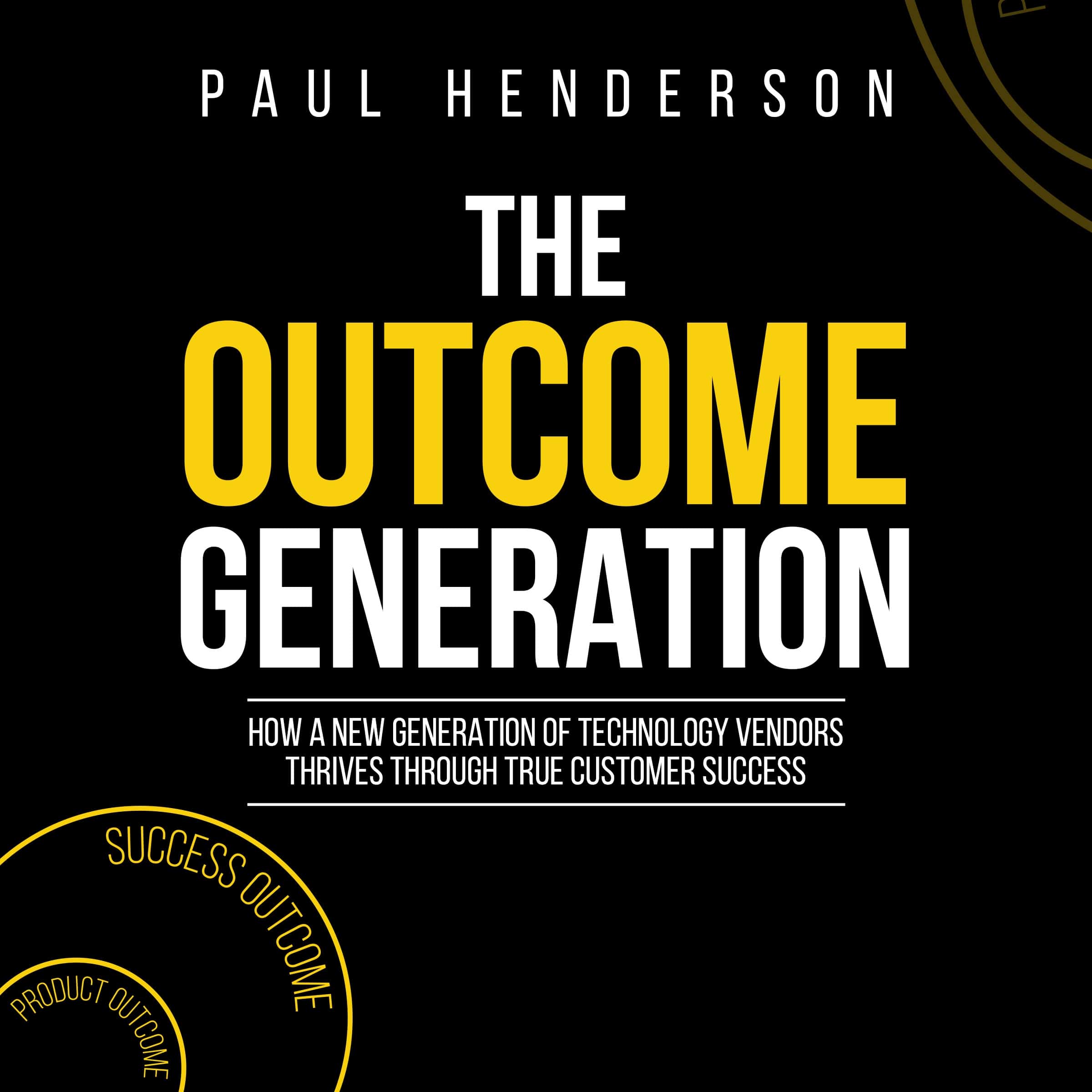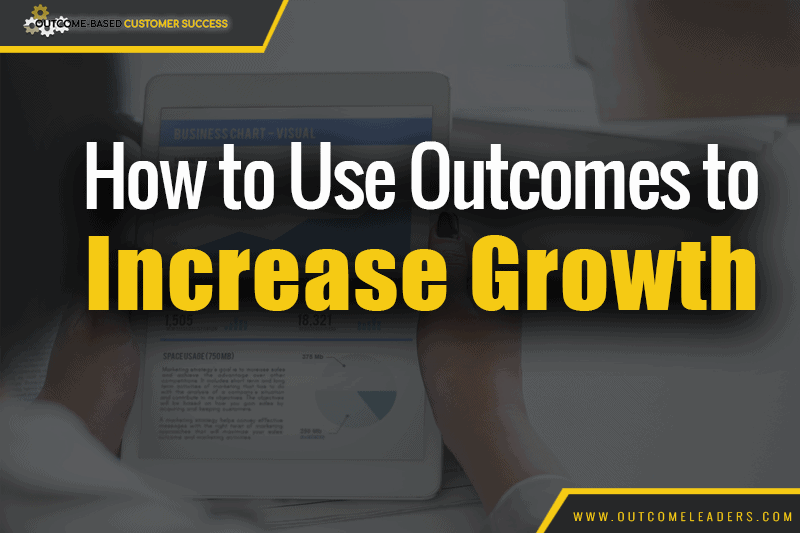
Here’s a simple model to understand where growth comes from. And how to use a specific type of outcome to increase growth.
How Our Customers Feel About Us
Wouldn’t it be great if all our customers were passionate about us? Our growth would be off the charts and we’d have more advocates than we could deal with. Sadly, for most technology vendors, that’s not the case. There’s a range of feelings from customers towards us.
At one end, we have customers who feel cold towards us. We all have those customers. At the other end, we have passionate customers. They love us. And between, we have a group who feel neutral. This group don’t dislike us, but they’re not extolling our virtues either.
If we plotted the number of customers in the cold, neutral and passionate groups, it would look something like this.
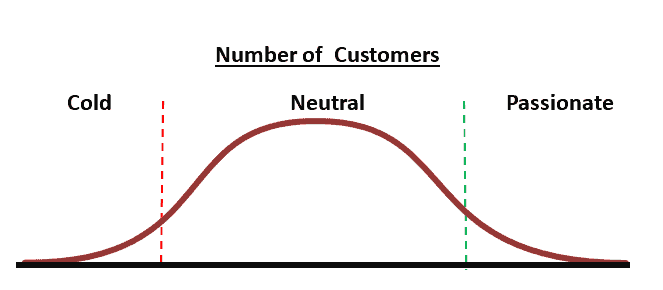
Where Our Growth Comes From
Let’s look at growth in each of these groups. At the bottom end, the cold customers, we often see negative growth. This group has the greatest risk of voluntary churn. This is our red zone.
At the top end, our passionate customers provide the high growth. These customers buy our new products and services. And they expand usage. The growth in this group is well above average. This is our green zone.
In the centre we’ve got our neutral group of customers. There’s a range of attitudes in this group, with some at the positive end and others closer to the negative end. On average, they’re neutral. This is our amber zone. We’d describe the spending behaviour of this group as ‘minimum possible spend’. They only buy users when they must. They are slow to buy new products and services, if at all. It feels like a grind to get them to do anything with us. We get some growth but typically as a result of their business growing.
If we plot the growth for the three groups, it looks like this.
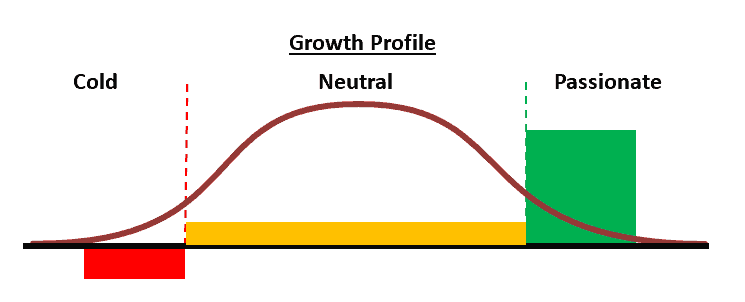
Increasing Growth
How do we change this profile, and increase our growth?
First, we want to stop losing revenue. We want less churn. We want to decrease the percentage of our customers in the red zone. We’re going to convert some cold customers to neutral customers. The red line will move to the left.
Next, we want to increase the percentage of customers in the green zone. We’re going to convert some neutral customers to passionate customers. The green line will also move to the left.
When we’re successful, our growth profile could look like this.
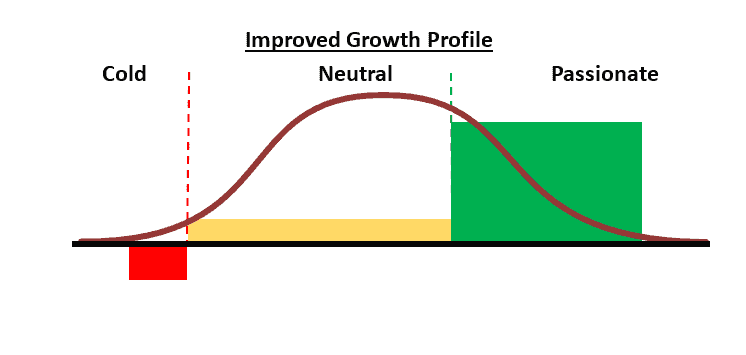
Reducing the Red Zone and Increasing the Green Zone
Sounds easy, right? Just move the red and green dotted lines to the left. But how?
It’s about changing the emotions of a few key people.
When people buy, they first make an emotional decision. We like to think we’re rational. That’s not the case. When we buy, we all make an emotional choice first, then we rationalise that decision. We come up with good reasons to support the emotional choice we’ve made.
So, we know the customers’ feelings play a major role in their buying behaviour. We need to change those feelings in the red (cold) and amber (neutral) zones. We want customers in those zones to feel more positive towards us. Then some of the cold customers won’t leave. And some of the neutral customers will buy more from us.
Companies Aren’t Passionate
We don’t have passionate customers. Our customers are companies and companies don’t have feelings, so they can’t be passionate. It’s people who have feelings. So, we need to change how people in the customer feel about us. And it’s not many people. Perhaps only one. When customers make buying decisions, there’s usually a small number of people who make a big impact on the decision. Yes, a final sign-off may need a broad agreement. But there’s a small number of people in the customer driving the purchase.
How do we make these key people feel more positive?
Understanding What People are Really Buying
If someone in our customer champions a technology purchase, they run a risk. If the project fails, their reputation will suffer. And their bonus and promotion opportunities might also take a hit. That will make them feel negative about us.
But, if the project succeeds, their standing will soar. As might their bonus or promotion opportunities. We’ll have helped them become a hero or heroine in their company.
So, the people who drive the decision to buy our product want the opportunity to become a hero or heroine. That will happen when the project they’ve championed becomes a success.
What Does Success Look Like?
Top management has approved the project to achieve an ongoing and measurable improvement in the business. They want the business to be different and better. The project teams usually focus on getting the software live. But that’s not enough for true success. If there’s no noticeable improvement in the business, then no-one’s getting a bonus or promotion.
To be sure that top management see the project as a success, we must ensure the measurable improvement in the business takes place. The project must deliver a genuine outcome. When that happens, the key people in the customer become heroes or heroines.
Heroes and Heroines Buy More
Our key people in the customer are now heroes and heroines. And they love us for helping them achieve that status. But top management always wants more improvement. So, the key people need to deliver more improvement to keep their status as heroes and heroines. As a result, they’re happy to buy more from us. They’ll continue as our internal champions.
And they’ll help us sell to other companies by being pro-active advocates.
Summary
How our customers feel about us varies. Some are cold, some passionate, and lots are neutral. And that affects where our growth comes from. Negative growth at the cold end, above average growth at the passionate end, and modest growth based on minimum possible spend in the middle.
To reduce the size of the red (cold) zone and increase the size of the green (passionate) zone, we need to create heroes and heroines in our customers.
To create heroes and heroines, the customer must achieve an ongoing improvement in the business that top management would regard as success.
Having created heroes and heroines in the customer, those people will ensure the renewal takes place.
To keep their status as heroes and heroines, they need to create even more improvement. Which increases the chance of them buying more from us.
And because they’re passionate about us, they tell lots of other people. Which increases our sales to other companies.
Our task is clear – turn key people in our customers into heroes and heroines by enabling business outcomes the top management regard as a success.
This article is based on the book; The Outcome Generation: How a New Generation of Technology Vendors Thrives through True Customer Success
Paul Henderson is an author, speaker and consultant on outcome-based customer success for technology vendors. His last role was leading the Asia Pacific region of an enterprise software company. He saw the potential that could come from delivering real and measurable business success for customers. So, he initiated a customer success program based on customer outcomes. He and his colleagues developed, modified and proved the model over more than five years. He thespent one a half years researching and writing, culminating in the release of The Outcome Generation.
+61 1300-859791
pjh@outcomeleaders.com
facebook.com/outcomeleaders
linkedin.com/outcomeleaders
youtube.com/outcomeleaders
Receive the latest on Outcome-based Customer Success |
Send us a Message
Error: Contact form not found.

